Universal Audio’s Spark subscription (native plug-ins) is on sale for 99 cents for 3 months for new customers through the end of the day Monday the 31st. That seems a good time to check in on the subscription offering, which is on my short list of subscriptions I’d consider. And it’s also a sale on for bundles of perpetual licenses if you prefer.
I describe this vis-à-vis Spark as I do think that’s the best option for average producers (or a la carte native if you prefer perpetual licenses). But all the native (“UADx”) stuff here does also run on UAD-2 and the free Luna DAW if you want live tracking (see Accelerated Realtime Monitoring). The native versions here perform similarly to other native plug-ins from other vendors. (There are sometimes some minor functionality differences but – generally, UAD-2 = Luna = Native as far as sound and most tools are available in both formats. Also: “Native UAD plug-in licenses are automatically included with any corresponding UAD-2 or LUNA plug-ins you own.” Source: FAQ.) So what I’m saying here generally translates to the other contexts.
Perpetual links here contain affiliate links. If you buy something from a CDM link, we may earn a commission.
In use
Here, let’s start off with some music. I decided to make a quick jam just to demonstrate that a) I love the Opal and PolyMAX synths that most folks seem to ignore, and b) you can use these studio tools to creative ends, not just as intended. The results can really take you to another place – you’re in the box, but it sounds like you’re not. And that’s kind of beautiful, because it means you can get musical in whatever tiny amount of space and time you’re able to carve out for yourself. I know a lot of us can’t devote days on end in a physical studio. These can be an escape.
About that Spark subscription
I know people are generally not fans of subscriptions. Universal Audio here makes a strong argument in that even with UA’s (sometimes befuddling) sales, Spark is likely to be the more economical route if you want access to the full library. Spark runs $19.99 / mo, which you can pause monthly if you don’t need it. (There’s also an annual $149.99 option if you prefer.) Note that Spark is mainly optimal for people without UAD-2 hardware because it includes only native (UADx) versions. You can’t perform real-time processing and monitoring as on UAD-2 hardware with Luna. For the rest of us, and anyone working with in-the-box producing, though, it’s an economical option. Also worth noting: you can use iLok authorization, but you’re not limited to that; UA’s own authorization scheme in UA Connect also works well.
I do wish UA offered this as rent-to-own, where your monthly investment earns you perpetual licenses or other credits. That seems a natural for Universal Audio, too.
But if you want a collection of classic recording hardware, some top-notch emulations, and a few modern/digital twists, Universal Audio’s offering tops the list. It’s not that you need this, necessarily – yes, if you learn mixing and mastering, you can honestly use any EQ and compressor. This is for when you’re ready to expand and understand how switching tools can matter. And for that, no one else gives you a library this comprehensive with this level of high-quality modeling. It’s really like having a research library of classic signal processing, tape, and studio tools.
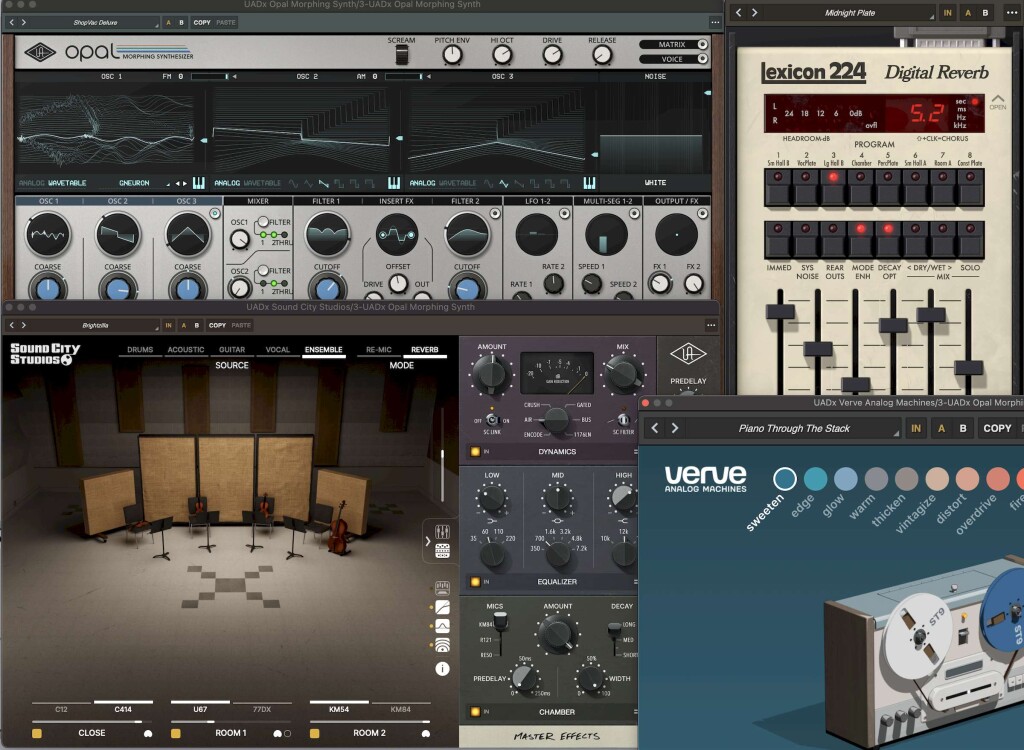
You can check the full list – it’s almost everything UA makes, with only a few exceptions. In summary, you get a completely history of classic signal processing, with the expected emphasis on Los Angeles, Capitol, and Universal Audio. Recently, they’ve rounded out the selection of tools focused on vocals and guitar, a welcome addition – and there are a handful of underrated modern/digital additions:
- Compressor models: API, Capitol, Teletronix, UA
- Guitar amps: Ruby, Lion, Dream
- Reverb / delay / modulation: Basic Roland (unbranded) Space Echo and Dimension D, plus bucket brigade chorus, rotary speaker, plate reverb, and reverb chambers, plus a licensed Lexicon 224
- Preamps, EQ, and tape: Manley, Neve, Avalon, API, Ampex, Pultec, SSL, Studer
- Verve Audio Machines, a new interface for navigating tape and analog gear
- Topline Vocal Suite and Key Finder, new vocal tools
- UAD Instruments: Electra 88, Moog Minimoog, Opal morphing synth, PolyMAX Synth, Ravel Grand Piano, Waterfall B3
The Spark page gives you a good overview of all these tools and their historical importance. Part of why this makes sense as a subscription is it’s really like having a fully stocked studio with all the major vintage gear, down to the instruments. UA’s interface design can be skeumorphic to a fault – I find some of the Manley gear to be a little hard to see. But that means you also get a simulation of what it’s like to work with the original gear and the way they present parameters – no compromises.
That is, sometimes the value of having these plugins is deciding not to use them. You can play what-if with classic gear and understand traditional techniques. (That’s even more true if you add the odd Eventide effect missing here, like the invaluable H910 or Omnipressor.)
But okay, if you are going to cough up the $20, you’ll want to use things, so let’s talk about what they’ve done lately and what is unique in this set. Arturia will still give you more synths with V Collection and has a nice blend of vintage and new with FX Collection. Roland has their synth library and some effects in Roland Cloud (especially since they finally added Jazz Chorus and their own Space Echo). And yeah, there are choices like Slate Digital or even newcomers like Minimal Audio. So is UA still worth considering with everyone and their dog coming up with an 1176 compressor emulation?
I’d argue yes, paying particular attention to the following:
Topline’s vocal processing is a home run
Topline Vocal Suite. I was skeptical here because of the trend toward “dumbed-down” plug-in UIs. But what UA has done with Topline Vocal Suite is really clever. This is really a case of a UI being organized around workflow and economical visuals – and, ironically, demonstrates what UA can do getting creative away from only the historical panel recreations, even if they have their place.
Topline organizes typical vocal signal chains into a left-to-right set of chains with icons and three panels for focusing on each element of pitch correction, dynamics and EQ, and coloration/tape effects. First, the pitch correction is superb – utterly transparent, to the extent that it’ll frustrate folks wanting vintage AutoTune and digital tuning effects. (I still swear by Soundtoys AlterBoy for the latter, and I guess if you want AutoTune, you should go to them.)
It’s just really good. It’s pitch correction that preserves the original performance, even if you crank the settings. Seriously, skip the YouTube videos or even me, go get the trial, and see for yourself.
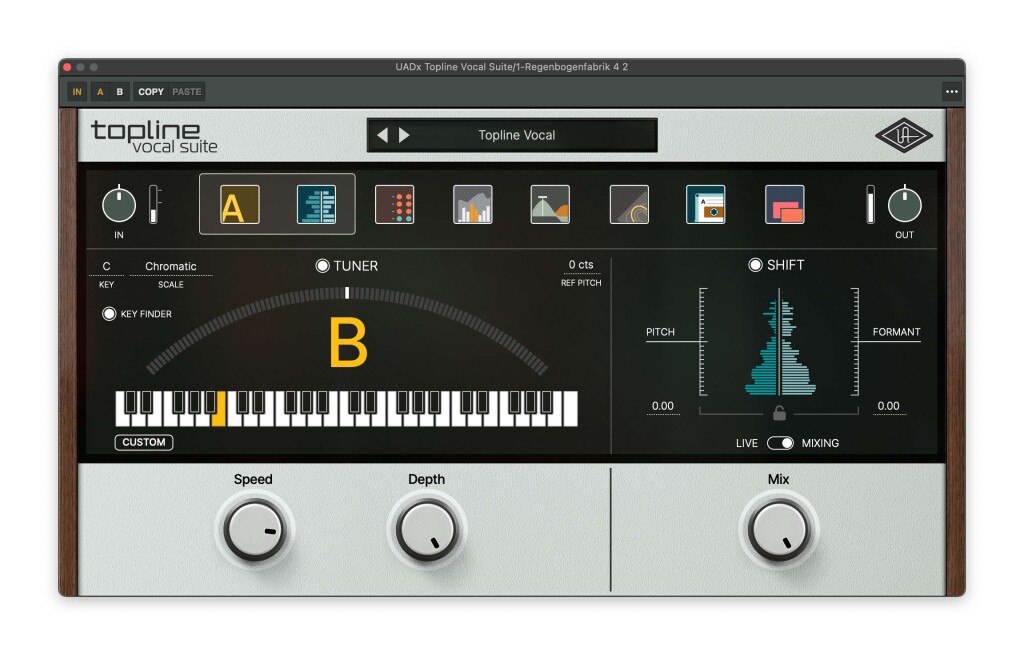
The other sections are equally well thought-out. The preamp/dynamics/EQ section is a little redundant for subscription owners because of the numerous offerings from SSL, Manley, and others you’ll find in Spark. But this represents a good, down-the-middle, everyday set of selections – perfect if you need to get results fast with a vocalist and don’t have time to drill down into the other options. Those do still have a lot of character, though, so you might skip this section and use the other two with the Spark subscription, depending on your tastes. The UI is great here, though, and there’s more here than you think at first because of the options for different routings and models:
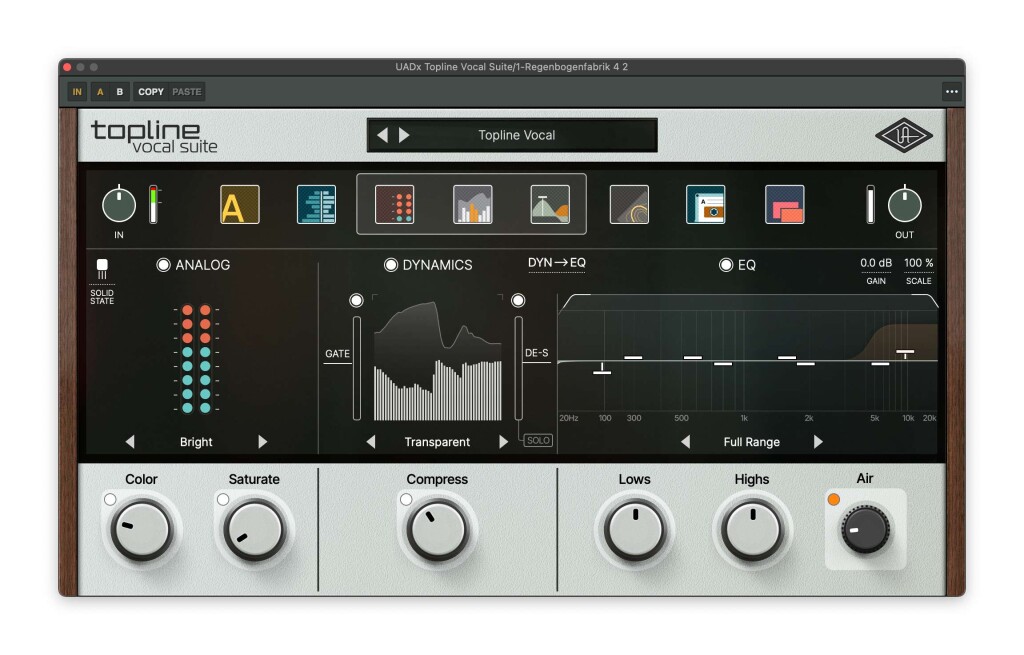
The modulation/delay/reverb section is the sleeper hit, with some wonderfully compact routing options. It’s an unexpected creative playground:
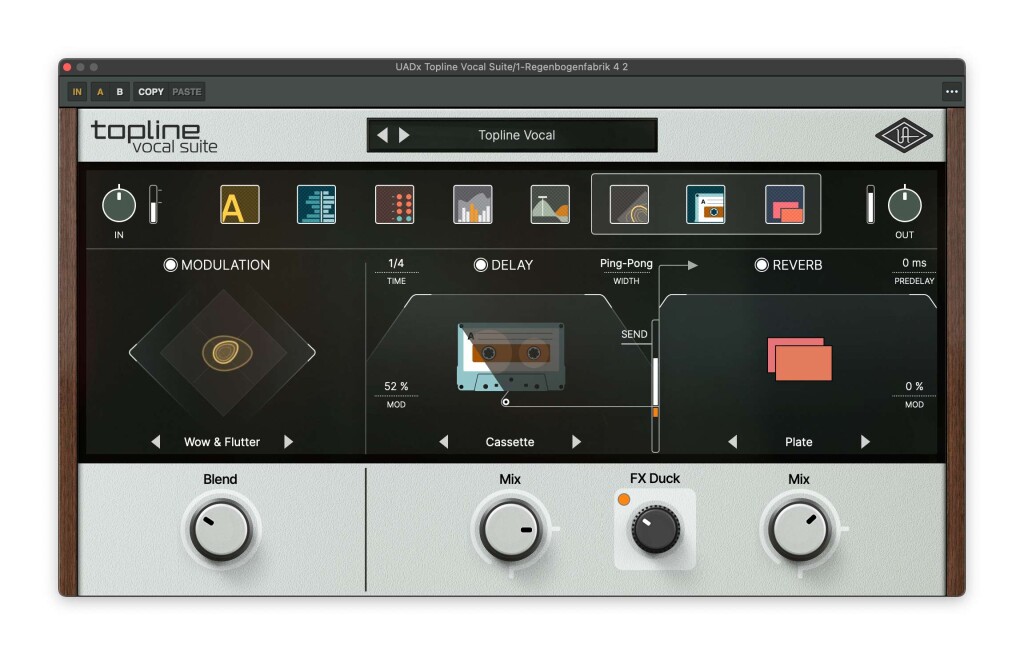
Verve Audio Machines is lovely and fun, but it’d be great if we saw some of this more detailed approach in Topline in future effects from UA.
It’s pitch correction that preserves the original performance, even if you crank the settings.
How good is it? I tried processing a couple of vocal sketches from my iPhone 12 (not the one with the new mics) and Voice Memos, and was able to make even those sound convincing. Start with one of the excellent UA Standard Series mics and its Hemisphere Model, throw it into here, and you have a great process.
This is on sale, too, if you prefer to get the standalone and skip the sub.
It does amps now
This is another example of “you may have this already,” but it does round out the selection – and UA’s models are again exceptionally good. I’m particularly fond of the Dream Reverb Amp.
These are nice enough that you can also stick the amps on a send for some extra crunch (as I did in the demo below). And you’ll see UA is finding some happy medium between skeumorphism to show the actual gear (which is helpful as visual reference to those who know it) and flattened, easy-to-see UIs now:
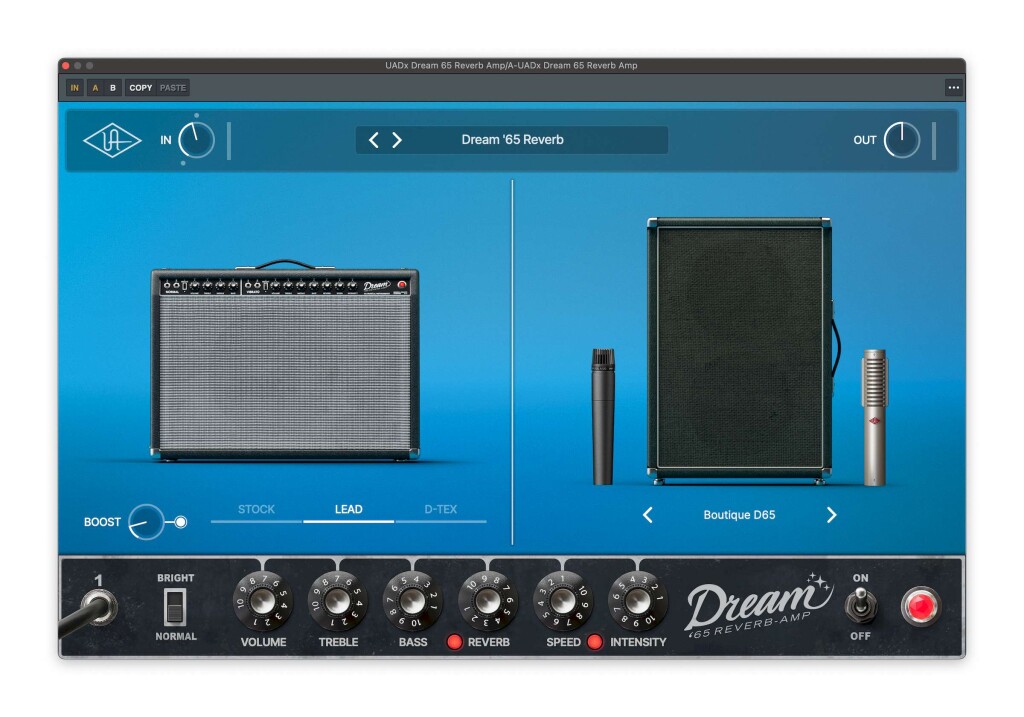
The reverb chambers / Sound City Studios are a joy
Holy crap, the reverb chambers and Sound City Studios. So yeah, you can get most of the Spark package elsewhere in some form – including the Pure Plate Reverb and Lexicon 224 (even if you might not get the official Lexicon logo on it).
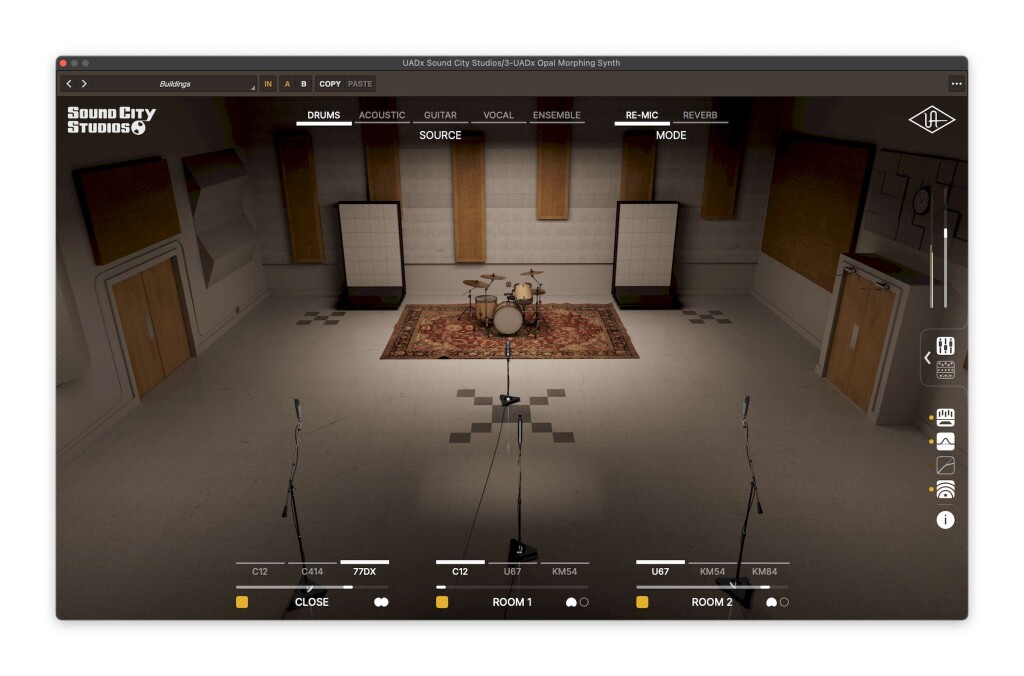
But having access to the echo chambers from Capitol Studios and Hitsville/Motown is great. I don’t want to suggest that this is a substitute for dragging your monitors into the hallway or toilet and doing this the old fashioned way. But it does soud really special, and it’s lovely to have at your disposal. Ditto the gorgeous Sound City Studios and its re-miking. Each of these has a broad range of possibilities – Sound City, especially. The mic and speaker choice and placement really do make a significant difference, so there’s a strong argument for these plug-ins over just some impulse responses.
They’re all unreal for synths, too.
Don’t overlook these two synths
Two tools in the package I’m sure most people ignore are the Opal and Polymax synths. I find this far more interesting than pulling out another Minimoog (sorry), and they’re another strong argument for UA to look at more original designs as they expand Spark.
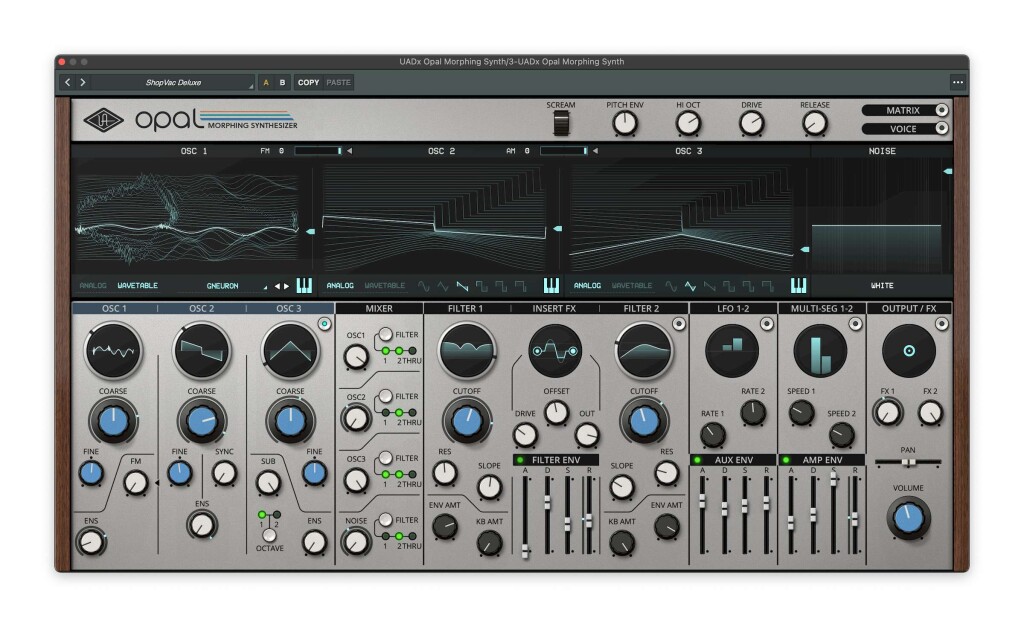
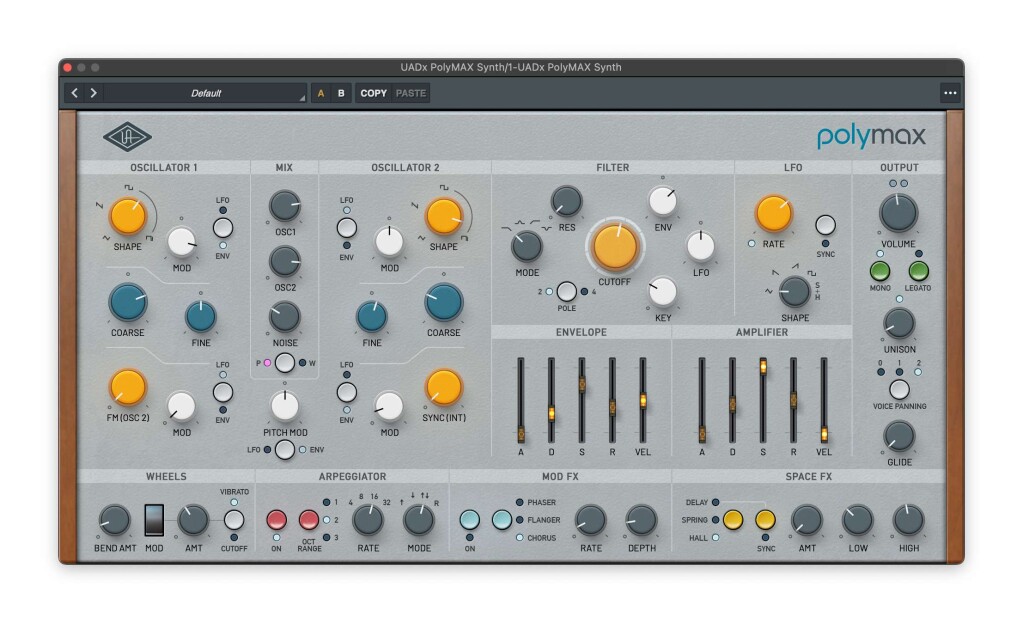
What’s great about them is that they’re each focused instruments, not more sprawling do-everything inventions. PolyMAX is deceptively simple, with wonderfully-tuned filter and envelopes and a bunch of modulation options that you access hardware-style via knobs. Having this cleaned-up, modernized poly honestly makes more sense in everyday use than some of the perfect vintage poly recreations, bless them. Opal – it’s the same story. Looks are deceiving, because they’ve nailed the filter, modulation is accessible, and it’s a nice combination of wavetable and analog.
Now, UA, why can’t we get some new creative effects with this same approach, using the modeled components library you’ve built up? I suspect your customers are part of the reason, so here’s hoping we can advocate people exploring new sounds.
UA’s presets are the best in the business
Also worth saying: UA has done an excellent job of curated useful presets, organized by how you’d actually use them. Since a lot of the focus here is on historical gear, it’s useful to be able to refer to the textbook use cases. That “Best Of” tag isn’t kidding, too. You have favorite capability, tags can be stacked, you can view by category or artists, and best of all, it’s in a pop-up window so it doesn’t block the UI.
So when I say this is the “best” preset UI, I also mean UI/UX as combined with preset curation. This should be a model for others:
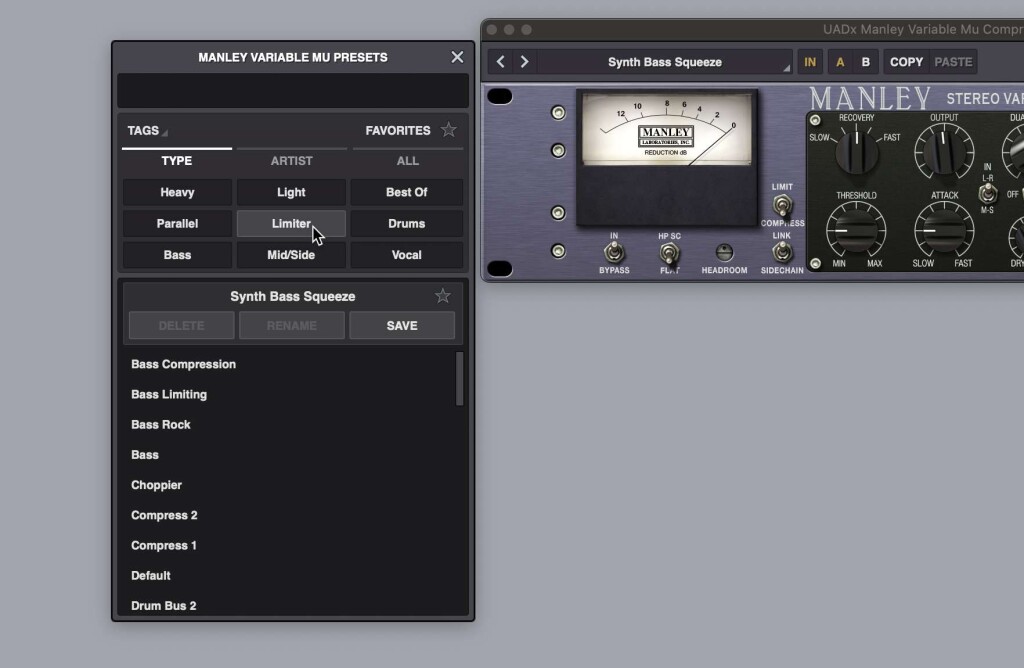
Best of the rest
There are some other stand-out reasons to grab Spark (or standalone options when available).
The Pultec EQs I’ve been using since my colleague Nerk turned me onto them in UAD form. There are other Pultec-style recreations, but having this precise replica is an experience all its own:
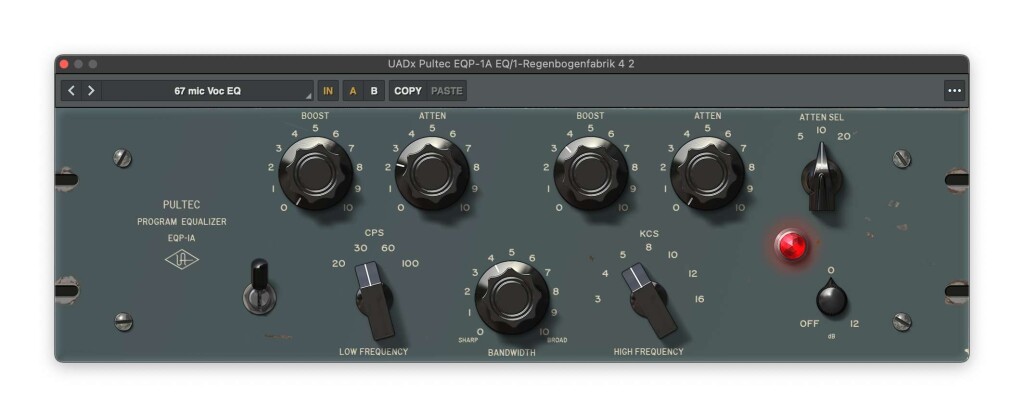
The Manley stuff I have a love/hate relationship with because this UI is – uh, intense – but damn, it does sound good.
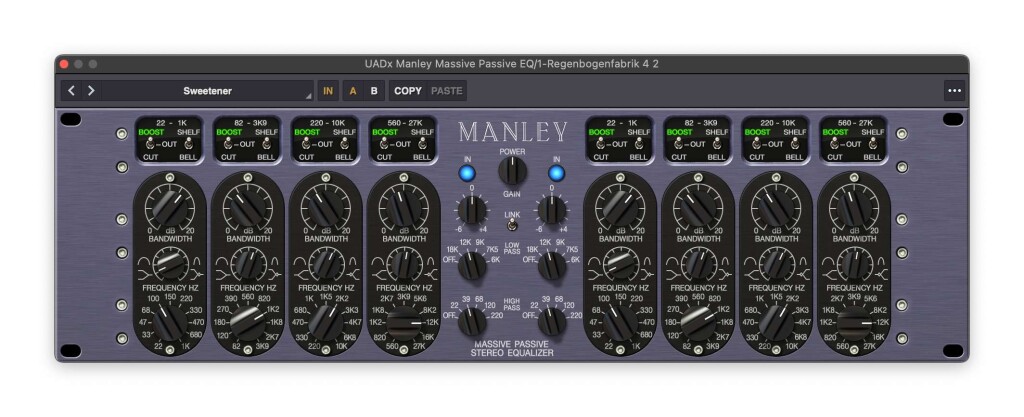
The Distressor is just a joy to have and a favorite all around, and you can look up various comparisons to hardware online. It’s pretty darned close, certainly for how a lot of us use it.
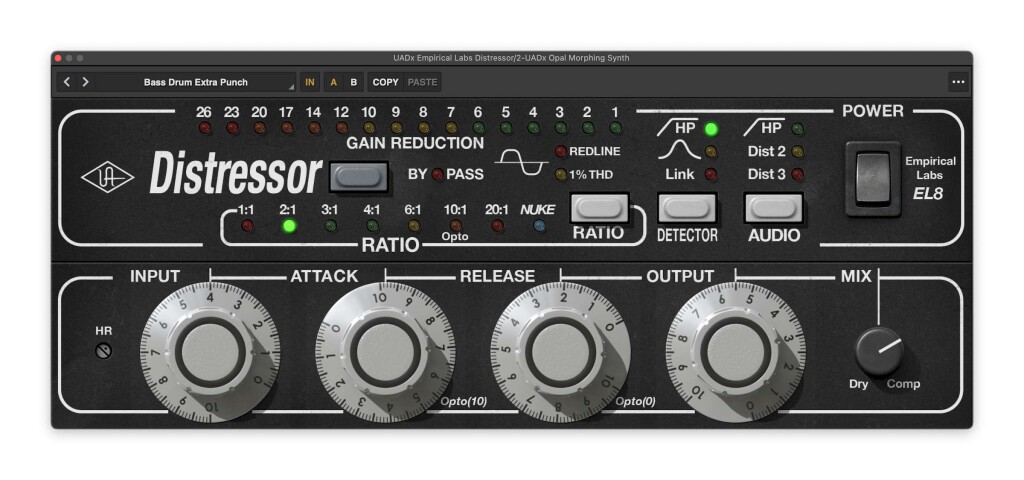
The tape stuff can actually do some harm, I find, if you don’t use it sparingly. But rather than look for some snake-oil magic on your masters, it’s worth exploring for creative results. (That’s not to say you can’t sometimes use it to glue together a mix – you just want to be really careful not to just muffle the thing and lose dynamic range, or stick some eye candy UI on something without really listening carefully. It’s more the fault of our ears than it is UA’s modeling chops.)
All of this means the playful approach of Verve Analog Machines is nice, in that it bundles together some of the creative coloration you can do with tape. The advantage of Spark is, you can continue with some of the specific tape models – though Verve comes with some more exotic stuff that isn’t available separately.
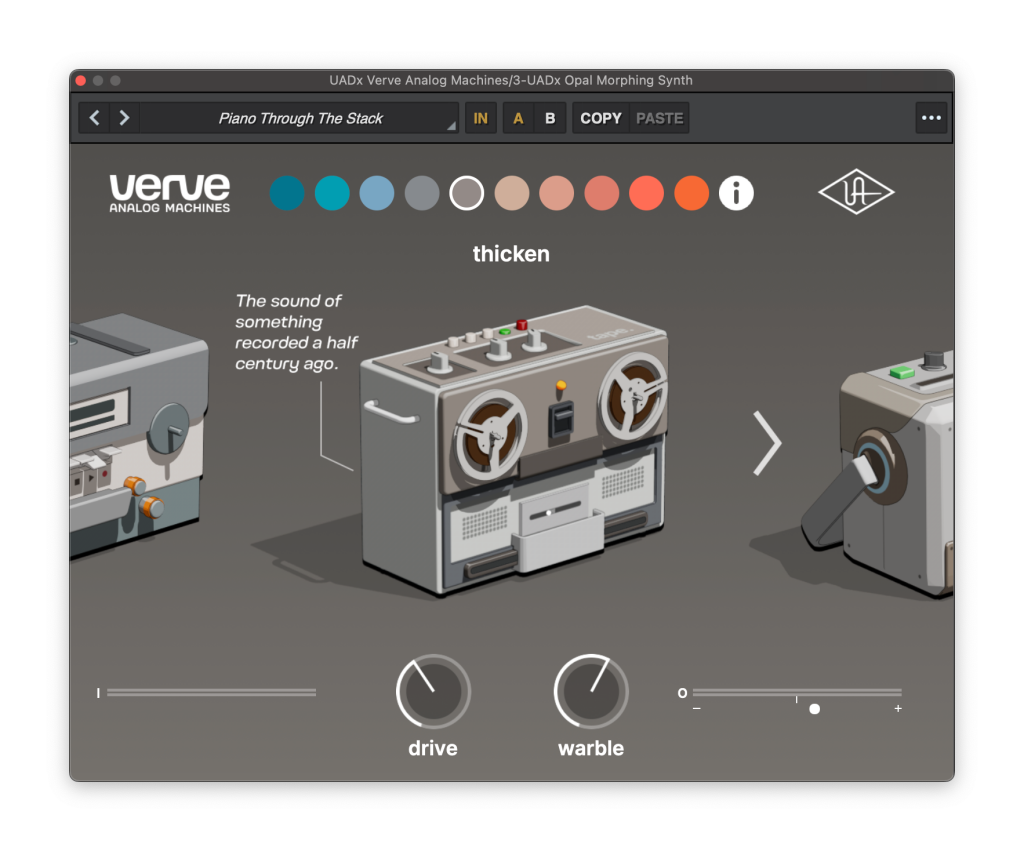
Parting shot
Having read some comments – a thought. Yes, constant sales can be annoying (especially when UA is approaching let’s say – “waves” of emails coming into shore). But let’s pause. Would I trade the current UA from the UA from ten or fifteen years ago? Totally not. Now you have a choice of running native if you don’t need the extra features of UAD live monitoring. The UAD-only approach of the past was a huge cost barrier. If you do want real-time effects for tracking (or even performance), UAD-2 works better, is more affordable, and now has a free DAW (Luna) to go with it. Their software installers and driver updates frankly used to be a pain; I haven’t had any issues with their new updates or license scheme. UA’s hardware is also finally affordable – Volt is great, and their mic lineup offers some cost competitive alternatives to some of the bigger names.
And beyond that, part of why I wanted to do this check in is, UA is firing on all cylinders software-wise. I remember the old plug-ins distinctly, and they’ve done a lot of work improving sound performance and UI. Also unlike some of the other bigger names, they’ve done so without the sense that any of the library is neglected. I’m a little confused by the different 1176 models, but generally you can open any of this stuff now and expect consistent sound and UI quality (if a lot of skeuomorphism). The newest stuff is genuinely exceptional, too, which you might not guess from the minimalistic UIs.
I do hope UA looks at some of the customer feedback and considers making the sale cadence a little less overwhelming. I think it detracts from the products, and the products are great. I’ll keep tabs on new launches from them.
Which perpetual synths I’d grab now
About those sales – some do look good today.
UAD Essentials Edition is probably the best buy alternative to Spark, because you get Verve Analog Machines Essentials, Galaxy Tape Echo, Pulteqs, PolyMAX Synth, Century Tube Channel Strip, some Teletronix action, Pure Plate Reverb, and Oxide Tape Reorder.
Really all you’re missing out on from my top picks are the Topline Vocal Suite and, sadly, the chambers/studio. This is even cheaper from Plugin Boutique than UA:
For more in the bundle, like the Opal and Minimoog, among others, there’s the Producer bundle:
Just want the compressors? Plugin Boutique has an exclusive bundle:
Universal Audio UAD Monsters of Compression Bundle (Exclusive)
Channel strips / tape / Lexicon 224 bundle:
UAD Studio Classics Bundle (Exclusive)
Hitsville Reverb Chambers is on sale, too, and of all three of these is probably my favorite. There’s nothing else quite like it, so it’s a great pick if you say, meh, I have the rest already!
And then there’s:
Empirical Labs EL8 Distressor ($45 is a steal…)
Check the full sale, if you dare:
Or the Spark subscription, if you’d rather just have all the latest-and-greatest native stuff on demand (and the ability to pause if you know you won’t be doing studio work for a few months):